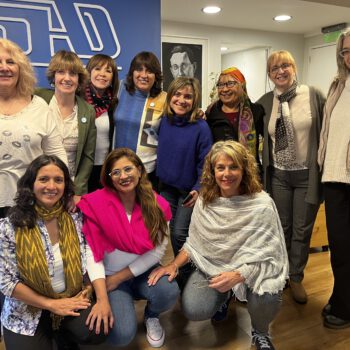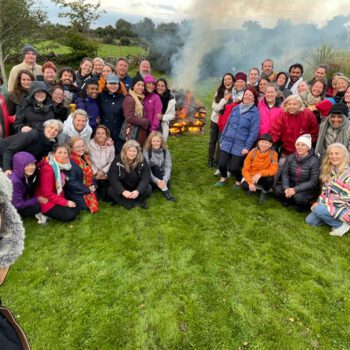By Charon Normand-Widmer
In the vast tapestry of human existence, our lives are intricately woven with the threads of culture. From the languages we speak to the customs we observe, culture shapes our perceptions, beliefs, and behaviors in profound ways. Yet, amidst the rich tapestry of cultural influence, lies a hidden force that often goes unnoticed: our cultural conditioning.
Cultural conditioning refers to the process by which individuals internalize the beliefs, values, and norms of their society or cultural group. From the moment we are born, we are immersed in a sea of messages that subtly mold our identities and shape our worldview. However, becoming aware of our cultural conditioning is a transformative journey that requires introspection, openness, and a willingness to question the status quo.
The first step towards unraveling the layers of cultural conditioning is acknowledging its existence. Like fish swimming in water, we are often unaware of the cultural currents that flow around us, shaping our thoughts and actions. Children under the age of 6 have little to no filtering process; we absorb the thoughts and beliefs of our first socializing structure: our family of origin. However, by taking a step back and observing our own behaviors and beliefs with curiosity and objectivity, we can begin to recognize the influence of culture in our lives.
Self-reflection is a powerful tool for uncovering the deep-seated beliefs and biases that have been ingrained within us since childhood. By examining the messages we have received from family, media, education, and society, we can identify the cultural scripts that have been playing out in our lives. This process requires courage and honesty, as we confront aspects of ourselves that may be uncomfortable or challenging to acknowledge.
Growing up, I never really thought much about cultural conditioning. It was just the air I breathed, the water I swam in. It wasn’t until I ventured out into the wider world that I began to notice its subtle, and not-so-subtle, effects on my thoughts, beliefs, and behaviors. Growing up in a fundamentalist Christian community encouraged me to believe that our community beliefs were correct and that outsiders had it wrong. It wasn’t until I went to college and began my study of cultural anthropology that I even became aware that ‘culture’ meant a set of beliefs and practices transmitted from one generation to the next, that cultures are many and varied, and that these can peacefully coexist.

I was given an assignment to examine the effects of my culture upon myself and my belief system. I was so deeply immersed in my belief system that I couldn’t distinguish where my culture ended and I began. Was I defined by my Christianity? Was my identity tied to being Black? Were these identities separate or intertwined? These questions plagued me as I grappled with the assignment.
Though I struggled with the task and didn’t receive a high grade, I’m grateful for the experience; it ignited a journey of self-discovery, prompting me to question how I form my identity and recognize cultural messaging. This assignment marked the beginning of my journey to critically examine my own internalization of cultural norms and beliefs.
It’s crucial to stay mindful of cultural conditioning, especially as we engage with others who are navigating their own cultural influences. Recognizing that we all perceive the world through the lens of our beliefs is essential. When encountering someone who is triggered, such as experiencing anger, it’s important to understand that their reaction is not about us, but stems from their interpretation of the situation, which has been shaped by their cultural conditioning.
Acknowledging that their beliefs about boundaries, and what presents as impediments to them reaching their goals, stems from internalized cultural messages, helps us approach interactions with empathy and understanding. By creating space for their emotions without feeling the need to manage or control them, we can allow both of our nervous systems to process the present moment authentically and fully. This awareness fosters more compassionate and constructive interactions, enriching our relationships despite cultural differences.
One of the most illuminating aspects of becoming aware of our cultural conditioning is recognizing its role in shaping our perceptions of others. Cultural stereotypes and prejudices often color our interactions with people from different backgrounds, leading to misunderstandings and conflicts. By examining our own prejudices and challenging stereotypes, we can cultivate empathy and understanding towards those whose experiences differ from our own.
Cultural conditioning also influences our values and priorities, shaping our aspirations and goals in life. For example, the emphasis placed on individualism in Western societies may lead us to prioritize personal success and achievement, while collectivist cultures may prioritize harmony and cooperation. By examining the cultural roots of our values, we can gain clarity about what truly matters to us and align our actions with our authentic selves. It’s helpful to keep these influences in mind when interacting with others.
Becoming aware of our cultural conditioning is not a one-time event, but an ongoing process of self-discovery and growth. It requires humility, openness, and a willingness to challenge our assumptions and beliefs. By embracing diversity and seeking to understand the perspectives of others, we can transcend the limitations of cultural conditioning and embrace a more inclusive and compassionate worldview.
We could see this as a transformative journey that empowers us to reclaim agency over our lives and identities. By examining the cultural influences that shape our thoughts, beliefs, and behaviors, we can cultivate greater self-awareness, empathy, and authenticity. In doing so, we pave the way for a more interconnected and harmonious world, where diversity is celebrated and every individual is valued for their unique contributions to the tapestry of humanity.



